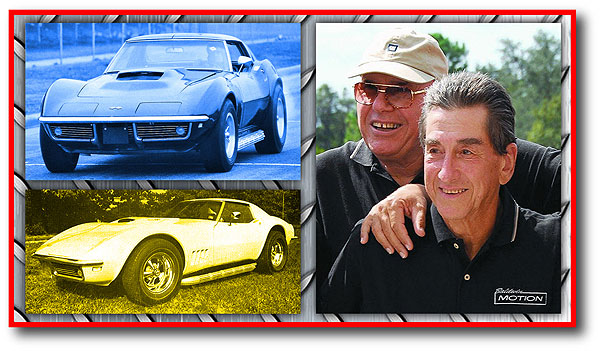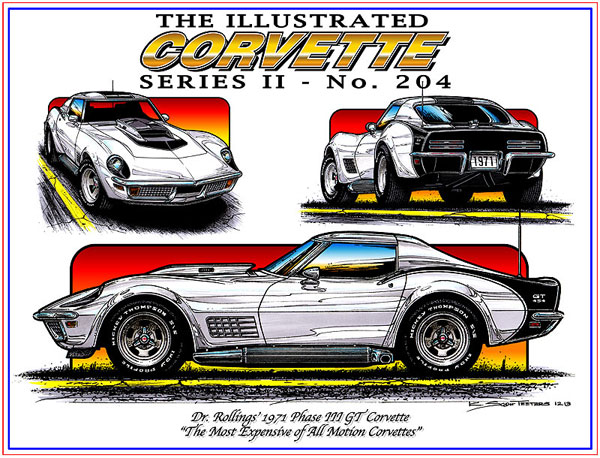An Intimate Conversation With Martyn “Marty” L. Schorr and Joel “Mr. Motion” Rosen – Co-Founders of the Baldwin-Motion Supercars
Dateline: 8.10.17 / Photos: Martyn L. Schorr & K. Scott Teeters’ Baldwin Motion Magazine Archives, Mecum Auctions, Dan McMichaels, & Google Maps – Part one of my 2013 Far Out Radio conversation with Marty Schorr and Joel Rosen is in the July 2017 issue of Vette Vues can be enjoyed HERE. The year 2017 marks the 50th Anniversary of the Baldwin Motion Experience. Before we get into the rest of my 2013 conversation with Marty and Joel I’d like to share an anecdotal story about setting up the interview.
I have known Marty Schorr since 1976, just after he started “VETTE Quarterly”, the first Corvette-only, newsstand publication. I’ve had numerous conversations with Joel since around 2000 and always found him to be polite, but very reserved. When I asked Marty if he’s like to me on my radio program he said, “Sure, I’d be happy to.” When I asked Joel, he said, “Well, okay, but I don’t really have that much to say. How long is the interview?” I told him I did a one-hour show and without the commercials and bumper music, we have around 45 minutes to talk. He said, “Oh… I really don’t have that much to say, Scott. Really.” So, I assured him that if he ran out of things to say, Marty would fill in the rest. 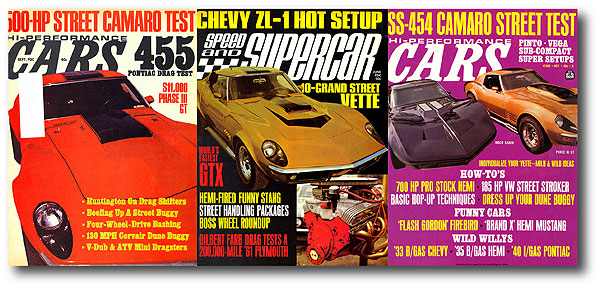 When the show started, Joel was reserved, as usual, but quickly loosen up. Before I knew it, he was seriously bench racing! As the host of the show I carefully watch the clock. When I said, “Well guys, we’re just about out of time, Joel said, “What! We just got started!” That’s just what happens when car guys get to bench racing.
When the show started, Joel was reserved, as usual, but quickly loosen up. Before I knew it, he was seriously bench racing! As the host of the show I carefully watch the clock. When I said, “Well guys, we’re just about out of time, Joel said, “What! We just got started!” That’s just what happens when car guys get to bench racing.
We left off our conversation with Joel explaining how he went from being a road racer to a drag racer.
Scott: Welcome back to Far Out Radio. Joel “Mr. Motion” Rosen and Marty Schorr, the creators of the Baldwin Motion Phase-III supercars of the 1960s and 1970s, are here with us this evening. We’re doing some bench racing and talking about those ground-pounding Chevy supercars from back in the 1960s and 1970s. So Joel, you got the drag racing bug, huh?
Joel: Yea, yea, I got that drag racing bug. One of the things, just to digress just a bit, is that back in the gas station I had, I was one of the first guys with a dynamometer in New York. I was into things like oscilloscopes before people knew what an oscilloscope was – on a car anyway, and I started to teach myself about that stuff. Then a product came out that was a capacitive discharge ignition system, the forerunner of all of the capacitive discharge units, and MSDs and all that. It was an EI-4 and an EI-5, and started to read up on this and the material said that you could run .005 to .006 sparkplug gaps and the engine will run much better and keep it in tune, bla, bla, bla.
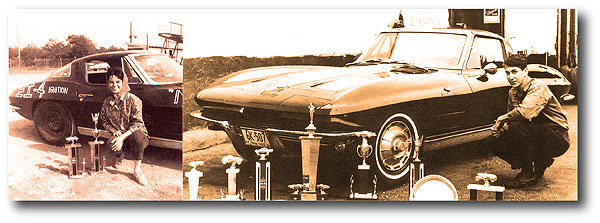 I bought some units and started putting it on people’s cars and my own car until that night I went out drag racing. The name of the company that made the capacitive discharge units was “Motion”. They just called it a “Motion Ignition”. So, to advertising the ignition, the night I went out to the drag strip with my ’63 Corvette, I got some shoe polish and put “Motion” on the front fender. Since I was winning, everyone was saying, “Did you see the Motion Corvette? Huh? Out on Long Island!” So, that’s how it really started. And it went on from there.
I bought some units and started putting it on people’s cars and my own car until that night I went out drag racing. The name of the company that made the capacitive discharge units was “Motion”. They just called it a “Motion Ignition”. So, to advertising the ignition, the night I went out to the drag strip with my ’63 Corvette, I got some shoe polish and put “Motion” on the front fender. Since I was winning, everyone was saying, “Did you see the Motion Corvette? Huh? Out on Long Island!” So, that’s how it really started. And it went on from there.
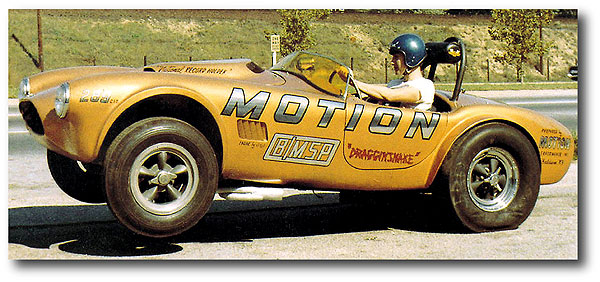 I had one of my customers, a fellow by the name of Bob Dayton who was a top disc jockey in New York at the time, and he had a ’64 Shelby Cobra that I used to service for him down at my shop in Brooklyn. And one day he said to me, “You know, I’m a car guy and I sell cars all the time.” So I said, “Do you want to sell your Cobra?” And believe it or not, he sold me his Shelby Cobra, which was almost new, with 4,000 miles on it for $4000!
I had one of my customers, a fellow by the name of Bob Dayton who was a top disc jockey in New York at the time, and he had a ’64 Shelby Cobra that I used to service for him down at my shop in Brooklyn. And one day he said to me, “You know, I’m a car guy and I sell cars all the time.” So I said, “Do you want to sell your Cobra?” And believe it or not, he sold me his Shelby Cobra, which was almost new, with 4,000 miles on it for $4000!
Scott: Hmmm…
Marty: I’ll take two!
Scott: That was a lot of money back then!
Joel: We had a lot of help from the Shelby guys. Little did they know that we were an open account Shelby dealer calling from a public payphone on Atlantic Avenue in Brooklyn! (Laughing) From a little gas station that was, like 20’ by 100’! And then I started to race the car and we got known for the fast Cobra. We put “Motion” in big chrome lettering on the side and all.
That got us further along and it came the time when I decided I had to move on and move out, and get out of that gas station, because people were starting to “shoot back” instead of “talk back”! So I moved out onto Long Island. And that’s when the Baldwin Chevrolet thing got started. The rest became history, although we no idea what we were doing!
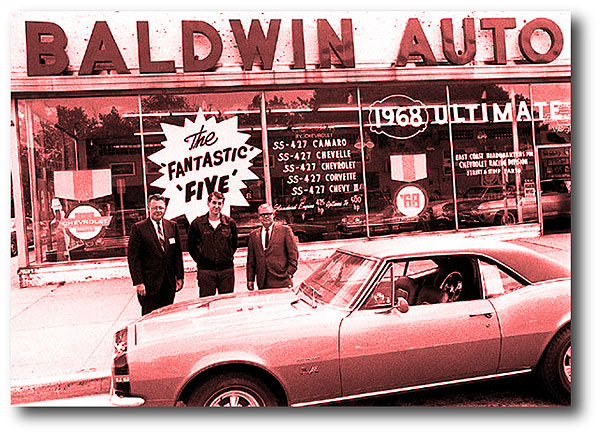 Marty: Laughing. You know Scott, you had mentioned about that ad for the SS-427 Camaro Supercar, the first one. And of course I did that ad, and it was kind of a basic, half-ass approach to it, but we didn’t know where this program was going, so there wasn’t a reason to put a lot of money into it. But what you have to realize is that Joel could deliver a car for that ($3,650) price if someone actually wanted it, and it would be that fast because of the things that he did to the car, that could have been done to a 396/375 as well, but it made the difference. The dyno tuning, the advanced curve, the distributor, gaining some traction – that was all key to making any car faster. So, that car was actually fast and it was a pretty “stock” car.
Marty: Laughing. You know Scott, you had mentioned about that ad for the SS-427 Camaro Supercar, the first one. And of course I did that ad, and it was kind of a basic, half-ass approach to it, but we didn’t know where this program was going, so there wasn’t a reason to put a lot of money into it. But what you have to realize is that Joel could deliver a car for that ($3,650) price if someone actually wanted it, and it would be that fast because of the things that he did to the car, that could have been done to a 396/375 as well, but it made the difference. The dyno tuning, the advanced curve, the distributor, gaining some traction – that was all key to making any car faster. So, that car was actually fast and it was a pretty “stock” car.
It wasn’t unusual back then to take a 427 and just do a few things to it and make the car really fast and quick. Most of the cars that got sold had a lot more done to them. That’s when we starting coming into the Phase-III cars, which had a lot of power and a lot of modifications. The first batch of cars more like, I guess today you call them Phase-II cars, where a guy would buy a stock car, then start making the simple modifications.
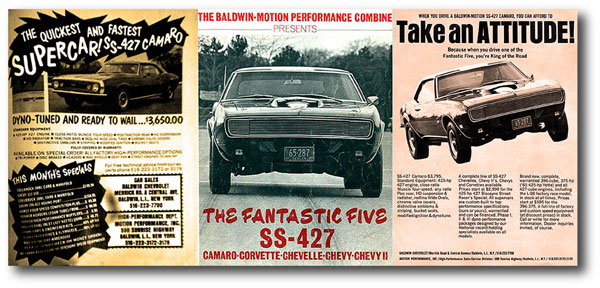 You know, it’s interesting, cars in general have become so expensive, that Joel and I always laugh about this whole thing – who can afford to buy a car that we used to build that Joel used to sell for $4,000-$5,000? ($5,000 in 2017 dollars is equal to $34,343 in 2017, but modern cars are so much more complex)
You know, it’s interesting, cars in general have become so expensive, that Joel and I always laugh about this whole thing – who can afford to buy a car that we used to build that Joel used to sell for $4,000-$5,000? ($5,000 in 2017 dollars is equal to $34,343 in 2017, but modern cars are so much more complex)
But Joel, there was one customer, that a guy from Jersey that eventually moved from northern California, who bought a 1968 L88 Camaro from you. Remember him?
Joel: Ah, yes, I don’t remember his name, but I remember the car.
Marty: His name will come to me. But, he raced that car, he was 17-years old, and his mother bought it for him. He raced that car and had a whole room full of trophies from Englishtown. He moved out to Northern California, and we didn’t hear from him for decades, until somewhere around 2008 when I was working on my book, “Motion Performance: Tales of a Muscle Car Builder”. He found me and still had the car! (as of 2008) The car was never restored. The car was like, “brand new.” He just showed it occasionally and we became friendly. And when the Muscle Car and Corvette Nationals did a Motion Reunion…
Joel: Lud Renner!
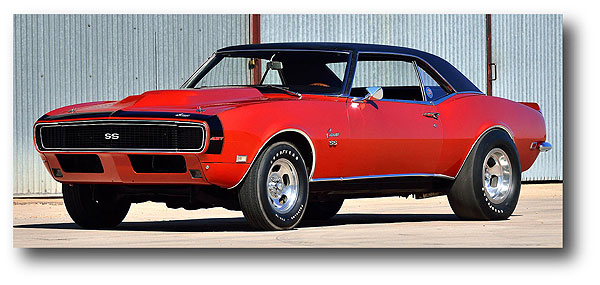 Marty: Right, Lud Renner, correct. He was a graphic artist who did very well in Silicon Valley with technology computer clients. Well, he brought the car to Chicago, for the Muscle Car and Corvette Nationals, to show us for the first time since he bought the car back in 1968. It was part of our display! Then someone came along and wanted to buy it. And to the best of my knowledge Joel, he took a tick under $500,000 for that car!
Marty: Right, Lud Renner, correct. He was a graphic artist who did very well in Silicon Valley with technology computer clients. Well, he brought the car to Chicago, for the Muscle Car and Corvette Nationals, to show us for the first time since he bought the car back in 1968. It was part of our display! Then someone came along and wanted to buy it. And to the best of my knowledge Joel, he took a tick under $500,000 for that car!
Scott: OH!
Joel: Well, what actually happened was, I had a conversation with him at the show. The car had 4,000 original miles and smelled like the showroom – which is unbelievable. I had a conversation with him there and I said, “If you ever want to sell this, people call me all the time, I’ll turn them on to you.” He said, “Naw, I really don’t want to sell it. You know, at this stage of my life, if somebody offered me a half a million dollars, I’d take it.” So I said, “Okay!”
I came back to New York and I called a couple of people that I knew. The first guy I called, right away he said, “I’ll take it! Get me the car!” So I called Lud and said, “I got a customer for your car. You’re not going to believe this, $500,000!” Lud said, “Joel, you don’t know what happened at the show! Somebody heard you and I talking, word went out at the show, and there were three guys that had a fight as to who was going to give me a deposit first!” $500,000!
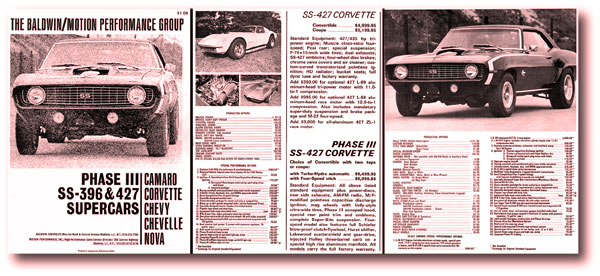 Scott: By the time this enterprise began to get traction in the late ‘60s, you guys were getting cover shots on CARS Magazine, full road tests, In-Your-Face advertising, you had beautiful, wonderful, fun catalogs. You had drag cars with national records; you had the Motion Minicar thing going. This enterprise just exploded, but I want to spend a little bit of time talking about your flagship cars – the Corvettes.
Scott: By the time this enterprise began to get traction in the late ‘60s, you guys were getting cover shots on CARS Magazine, full road tests, In-Your-Face advertising, you had beautiful, wonderful, fun catalogs. You had drag cars with national records; you had the Motion Minicar thing going. This enterprise just exploded, but I want to spend a little bit of time talking about your flagship cars – the Corvettes.
Joel: Well, yea, one of the things that was so nice about the program was that I loved to get into things and fool around with, and change things – styling and such. Being a Corvette guy right from the beginning, that’s where my roots were, so now, I had an “in” with Baldwin Chevrolet. I went to them and talked them into doing a package, which was our SS-427 basic car and we went on.
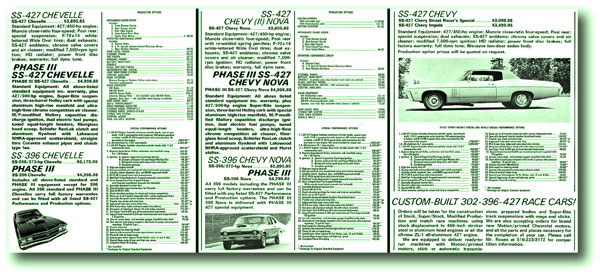 Part of the name was that because we used our Phase III Ignition system, we decided to call the cars “Phase-III.” We also had our own Grant steering wheel business, which very few people knew. The capacitive discharge ignition system we had built for us, we called it a Phase-III Ignition. And we put those in as many cars as people wanted.
Part of the name was that because we used our Phase III Ignition system, we decided to call the cars “Phase-III.” We also had our own Grant steering wheel business, which very few people knew. The capacitive discharge ignition system we had built for us, we called it a Phase-III Ignition. And we put those in as many cars as people wanted.
The Corvette thing was because I had a vision; “How about we do an Ultimate Corvette”. We started with the ’68 Corvette and we called it our “Phase-III GT”. I wanted that “European look”, where instead of the pop-up bug-eyes, put the headlights out in the fenders, and covered them with plexi-glass covers. We flared out the fenders and reversed the shark gills on the front fenders.
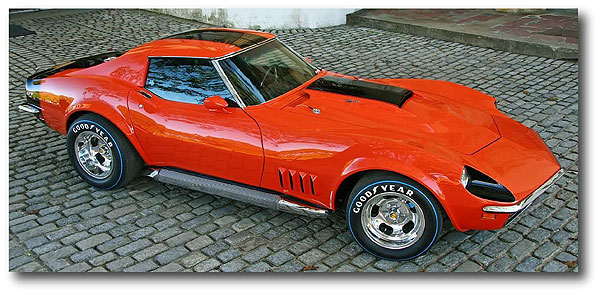 From 1968 on, my wife and I owned Newfoundland dogs, which are very, very large, big, hairy dogs that look like bears. We always used to take our dogs around, and didn’t have room in the Corvette, so I said, why don’t we take that silly back window, that little slotted back window, and make a lot of room back there. So, we made the first fastback (C3) Corvette.
From 1968 on, my wife and I owned Newfoundland dogs, which are very, very large, big, hairy dogs that look like bears. We always used to take our dogs around, and didn’t have room in the Corvette, so I said, why don’t we take that silly back window, that little slotted back window, and make a lot of room back there. So, we made the first fastback (C3) Corvette.
Which, just as an aside, brought me to a very, very nice relationship with Zora Arkus-Duntov, who followed my work for years and years, and years. Zora was Austrian and he had a very thick accent. I can still hear my daughter when she was little, running in to me saying, “DADDY! There’s a man on the phone with a very funny accent!” And there he was on the phone, “Hi Chole, watch’ya do’in?” So that helped us a lot.
The fact that the fastback went over and Zora liked it, and people liked it, was a big thing. So, Zora and I had that kind of connection, and I had the freedom to style a brand new car, whatever way I wanted to. So, we built about 12 or 13 of the Phase-III GT Corvettes, which was my idea of a European/American Corvette. Fortunately, it was pretty successful. We sold some cars back then for over $13,000! (A base model 1969 Corvette, already a premium car, cost $4,781) That was A LOT of money back then!
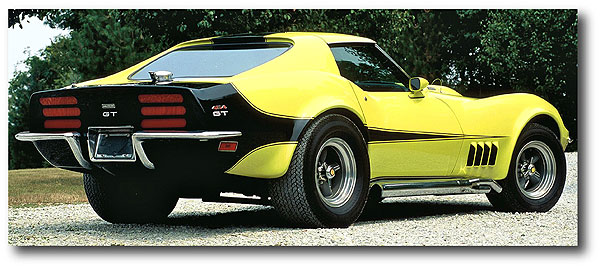 Scott: Tell us about the one that burned down, Joel.
Scott: Tell us about the one that burned down, Joel.
Joel: Well, yea, we had one Phase-III GT that burned down. I didn’t have my own body shop at the time, so I had to subcontract the bodywork. I finished all the mechanical work because it was the right thing to do before the bodywork. So I sent the car out to the body shop to get finished, and one of the employees was supposed to be taking the car to their storage facility. When the authorities found the car, it was burnt to the ground and was headed in completely the opposite direction where the storage facility was! So, I guess they must have cut a fuel line or something.
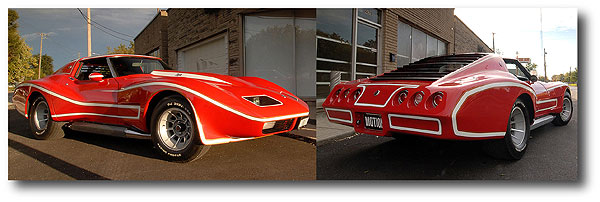 All we got back of the car was a chassis full of shredded wheat! That’s what happens to a Corvette when it burns! So, we had to start all over again and build the guy a different car. I build that car for a big, heavy-duty real estate guy from Hollywood. Ultimately I ended up owning that car. It’s now in a collection that belongs to a fellow by the name of Dan McMichaels who has about nine of my cars. He’s got pretty much the best of my Corvettes, all except for one. One of his cars, the Motion Spyder (the red version) will be coming up for auction at Mecum. This was a wide, super-wide Can-Am. (The red Can-Am Spyder went on the block at the Mecum Indianapolis Auction in May 2013. High bid was $120,000 and was a No Sale.)
All we got back of the car was a chassis full of shredded wheat! That’s what happens to a Corvette when it burns! So, we had to start all over again and build the guy a different car. I build that car for a big, heavy-duty real estate guy from Hollywood. Ultimately I ended up owning that car. It’s now in a collection that belongs to a fellow by the name of Dan McMichaels who has about nine of my cars. He’s got pretty much the best of my Corvettes, all except for one. One of his cars, the Motion Spyder (the red version) will be coming up for auction at Mecum. This was a wide, super-wide Can-Am. (The red Can-Am Spyder went on the block at the Mecum Indianapolis Auction in May 2013. High bid was $120,000 and was a No Sale.)
Scott: Did he finish the car?
 Joel: Well, the Can-Am Spyder that he’s putting up for sale, he bought the car just the way I got it, he bought it from some guy that just found it somewhere. I don’t know why he’s selling it, because I loved the car. I can’t understand why he would sell that one.
Joel: Well, the Can-Am Spyder that he’s putting up for sale, he bought the car just the way I got it, he bought it from some guy that just found it somewhere. I don’t know why he’s selling it, because I loved the car. I can’t understand why he would sell that one.
Scott: I remember when he bought that hulk, it was in terrible condition. He told me that he was, “Just what I need, another project. But I’ll get around to it.”
Joel: You’re thinking of the yellow Can-Am Spyder he bought recently. I’m talking about the red Spyder. The red Spyder, was the prototype for the yellow one. The red one had a louvered back window and then later ones when we went to the yellow Spyders that one had a hatch, it actually had a hatch.
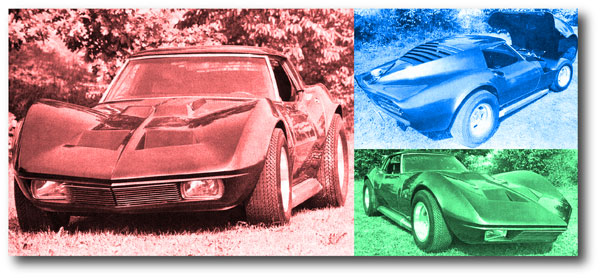 Scott: You know, you did a whole bunch of really cool Corvette supercars with all kinds of unique bodywork. You started off doing the flared fenders and the hood stuff on the Phase-III. Then the Phase-III GT took it up a notch. You got into the Maco Shark cars, then you did the Manta Rays, the Moray, and the widebody Spyder. Yea, you did so many neat things with the bodywork.
Scott: You know, you did a whole bunch of really cool Corvette supercars with all kinds of unique bodywork. You started off doing the flared fenders and the hood stuff on the Phase-III. Then the Phase-III GT took it up a notch. You got into the Maco Shark cars, then you did the Manta Rays, the Moray, and the widebody Spyder. Yea, you did so many neat things with the bodywork.
Joel: The Corvettes really gave me an opportunity to express myself. I was just very lucky to have the opportunity to do that.
 Scott: We just have a minute or two left, you know what they say, “Luck is what happens when preparedness meets opportunity.” If you hadn’t been prepared, the opportunity would have slid right on by.
Scott: We just have a minute or two left, you know what they say, “Luck is what happens when preparedness meets opportunity.” If you hadn’t been prepared, the opportunity would have slid right on by.
Joel: It’s like what Marty was saying, back then that, “there were no cars, except California cars”. I always had that in the back of my mind that New Yorkers could come up with the package that people would like.
 Scott: Do you have a ballpark notion as to how many of the Baldwin Motion cars you built? Are we talking dozens, hundreds, or thousands?
Scott: Do you have a ballpark notion as to how many of the Baldwin Motion cars you built? Are we talking dozens, hundreds, or thousands?
Joel: Hundreds.
Marty: I think the number 300 that we used in the book, was between the Baldwin Motion Supercars and the Motion cars.
Joel: Yea, I would think, at least, because we worked on cars from everywhere.
Marty: Well I’m talking about cars that you actually built for customers – custom-built for customers, rather than just cars worked on. These were complete package cars; many of them were Baldwin Motion cars, or copies of Phase III cars.
 Joel: People brought their cars into my service department, and later we had a body shop. We modified a lot of people’s cars, which are just now just known as “Motion” cars and are bringing out a lot more money than lets say the same thing that a backyard hot rodder would build. Because we did it, people are getting more money for it.
Joel: People brought their cars into my service department, and later we had a body shop. We modified a lot of people’s cars, which are just now just known as “Motion” cars and are bringing out a lot more money than lets say the same thing that a backyard hot rodder would build. Because we did it, people are getting more money for it.
Marty: Well I’m sure Dan’s Spyder is going to bring in some nice money.
Joel: I would think so. I mean I would love to have that car back. That was one of my very favorite cars – that red one – that was a hell of a car! It was so wide in the back, like an F40 Ferrari!
Marty: (Laughing) Joel, just get yourself a paddle and go to the auction!
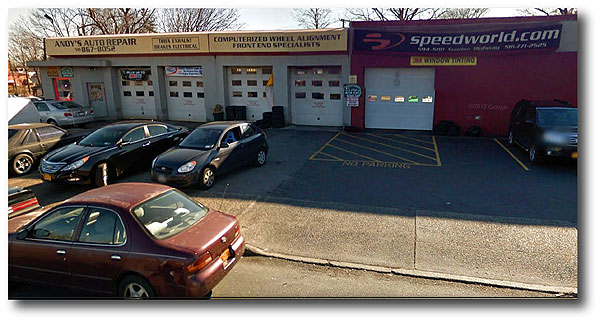 Joel: I mean, I was riding around on the street with 13-inch wide tires. That was unheard of back then!
Joel: I mean, I was riding around on the street with 13-inch wide tires. That was unheard of back then!
Scott: It certainly was. Guys, we’re out of time. Thanks so much for the hour or your time this evening, I’ve certainly enjoyed it, and I’ve enjoyed following your enterprises all these years. Marty, keep up with the nice work at CarGuyChronicles.com blog.
Marty: Thank you, Scott!
Scott: Every few days you always dish up fun stuff. And Joel, your models are really awesome.
Joel: Oh, thank you and thank you for having us on.
Scott: You are quite welcome guys. Thanks a lot, we’ll talk soon.
You can enjoy Part 1 of this interview HERE.
We have a large collection of Baldwin-Motion Corvette art prints HERE.

